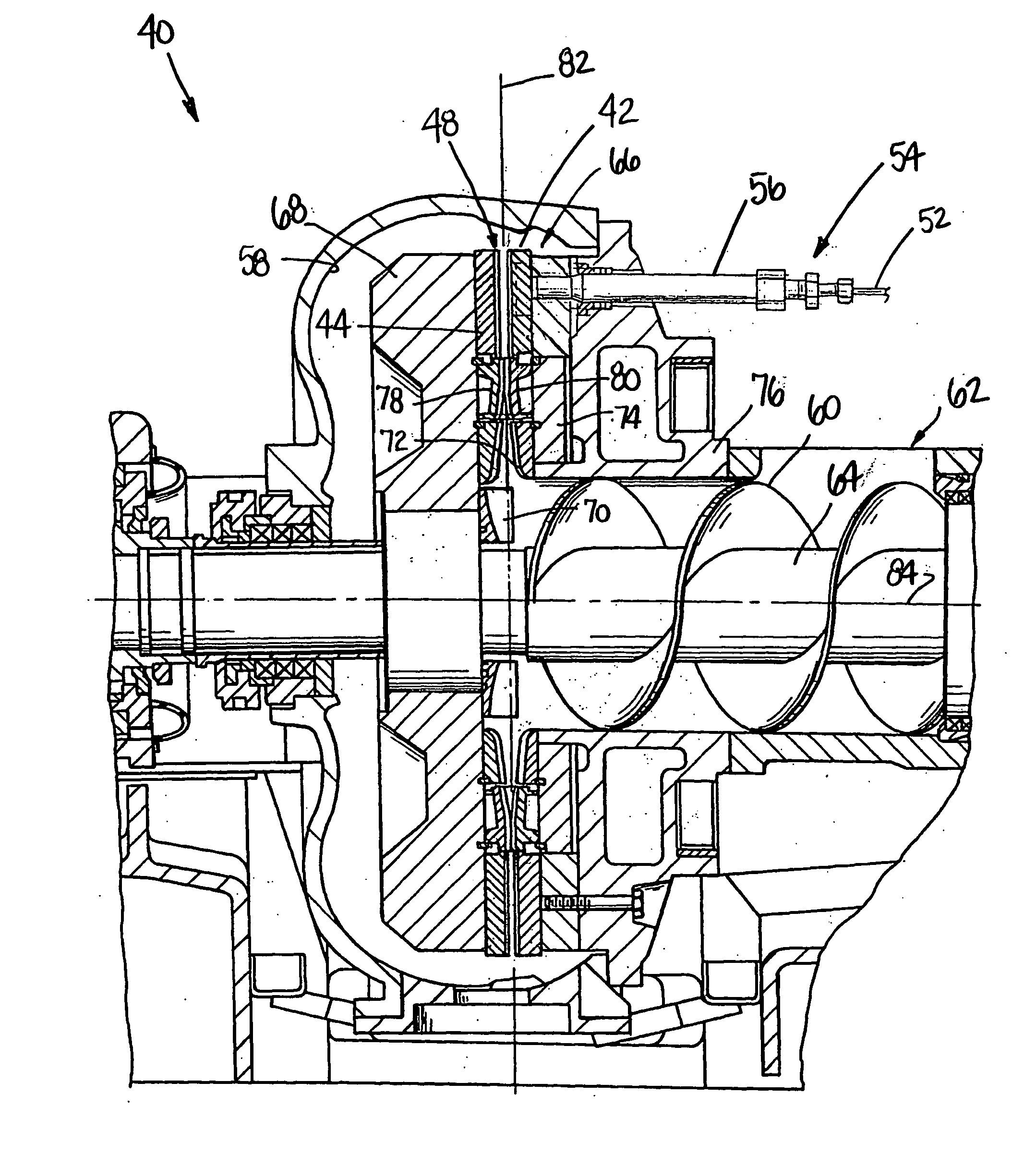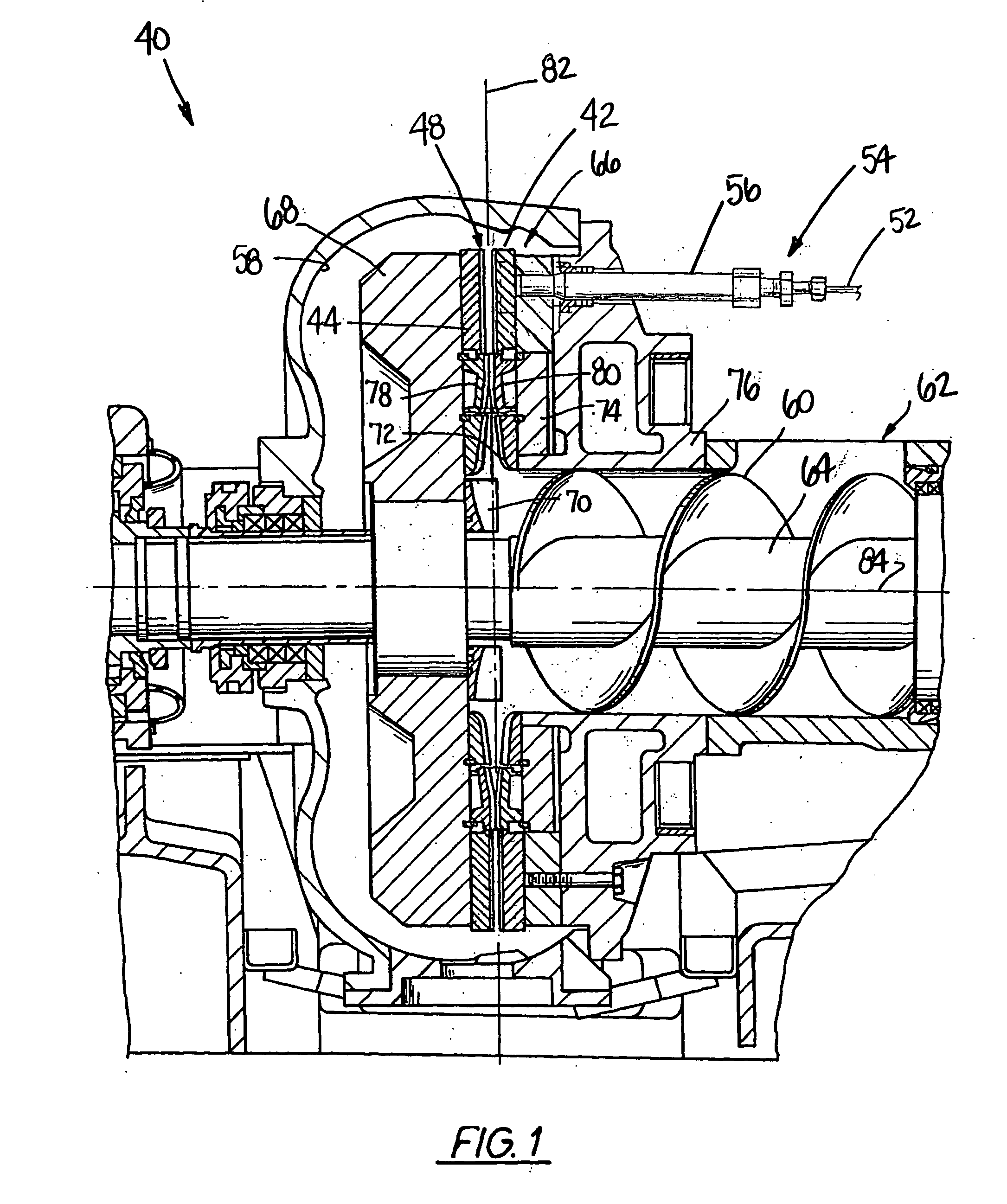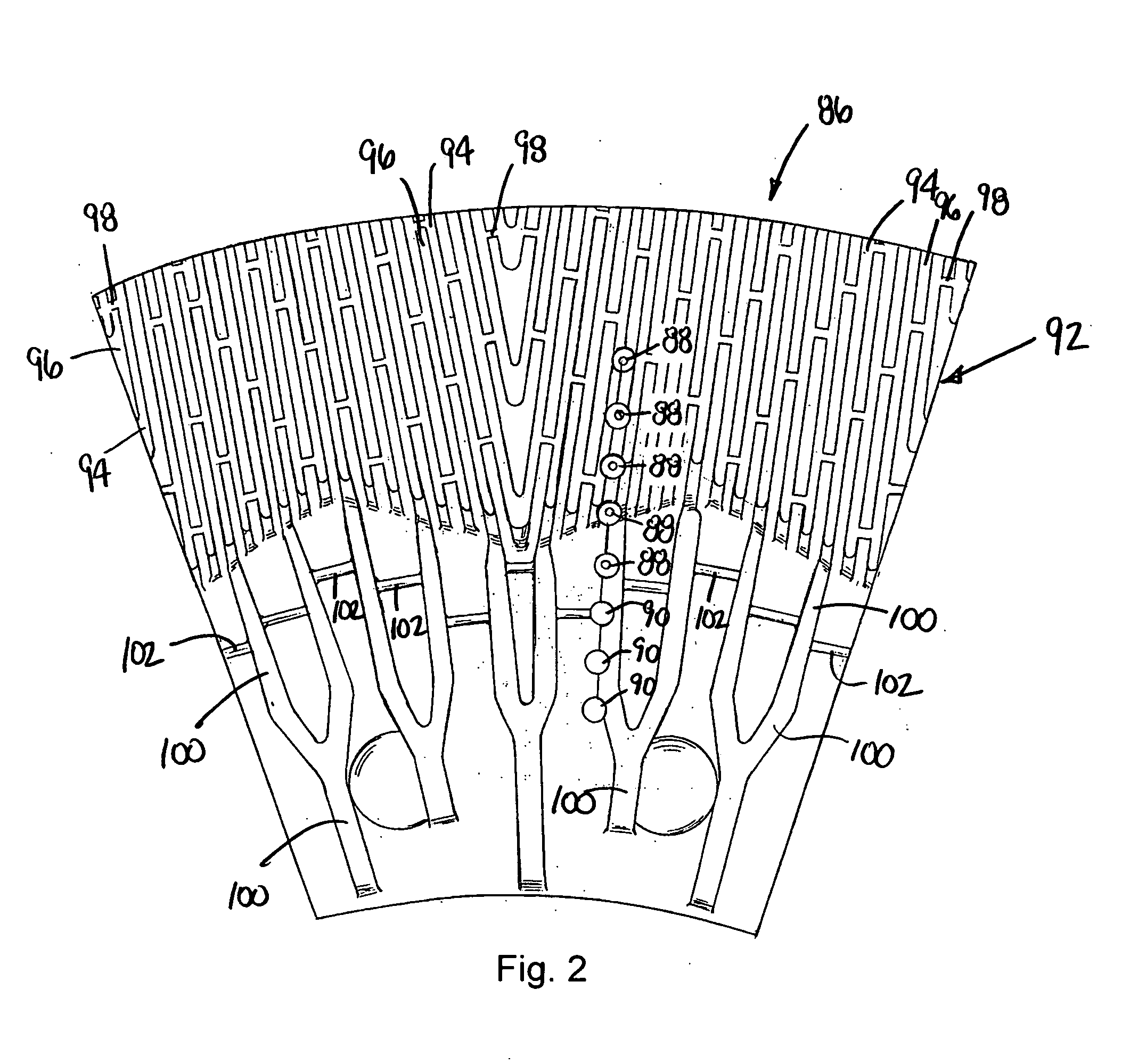Refiner sensor and coupling arrangement
a technology of which is applied in the field of refiner sensor and coupling arrangement there, can solve the problems of difficult to accurately measure parameters in the refining zone, such as temperature and pressure, and the quality of the resultant fiber product ultimately produced may not meet quality control standards, so as to improve the reliability and robustness of the sensor assembly and prevent the effect of sensor assembly failur
- Summary
- Abstract
- Description
- Claims
- Application Information
AI Technical Summary
Benefits of technology
Problems solved by technology
Method used
Image
Examples
Embodiment Construction
[0033]FIGS. 1-3 illustrate a refiner 40 that has a plurality of opposed refiner disks 42, 44, one of which carries a sensor arrangement 46 (FIG. 3) that is used to sense a parameter in a refining zone 48 located between the disks during refiner operation. The sensor arrangement 46 includes a plurality of sensor assemblies 50, each of which has a portion exposed to the refining zone 48 such that it contacts stock in the refining zone 48 during refiner operation. Sensor wiring 52 is received in a steam-tight conduit arrangement 54 that includes a section of conduit 56 that extends through a pre-existing instrument port in the refiner 40.
[0034] The refiner 40 has a housing or casing 58 and an auger 60 mounted therein which urges stock, typically in the form of a slurry of liquid and fiber, introduced through a stock inlet 62 into the refiner. The auger 60 is carried by a shaft 64 that is rotated during refiner operation to help supply stock to an arrangement of treating structure 66 w...
PUM
 Login to View More
Login to View More Abstract
Description
Claims
Application Information
 Login to View More
Login to View More - R&D
- Intellectual Property
- Life Sciences
- Materials
- Tech Scout
- Unparalleled Data Quality
- Higher Quality Content
- 60% Fewer Hallucinations
Browse by: Latest US Patents, China's latest patents, Technical Efficacy Thesaurus, Application Domain, Technology Topic, Popular Technical Reports.
© 2025 PatSnap. All rights reserved.Legal|Privacy policy|Modern Slavery Act Transparency Statement|Sitemap|About US| Contact US: help@patsnap.com



